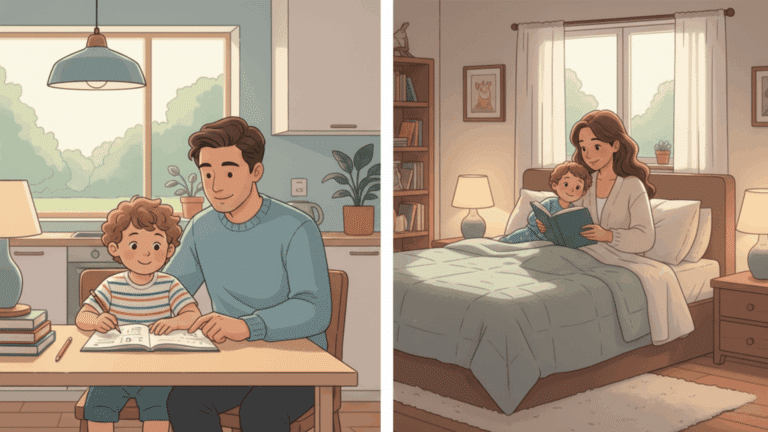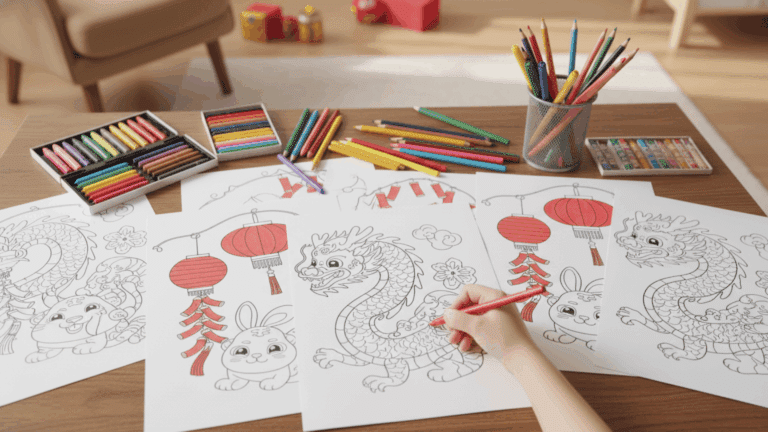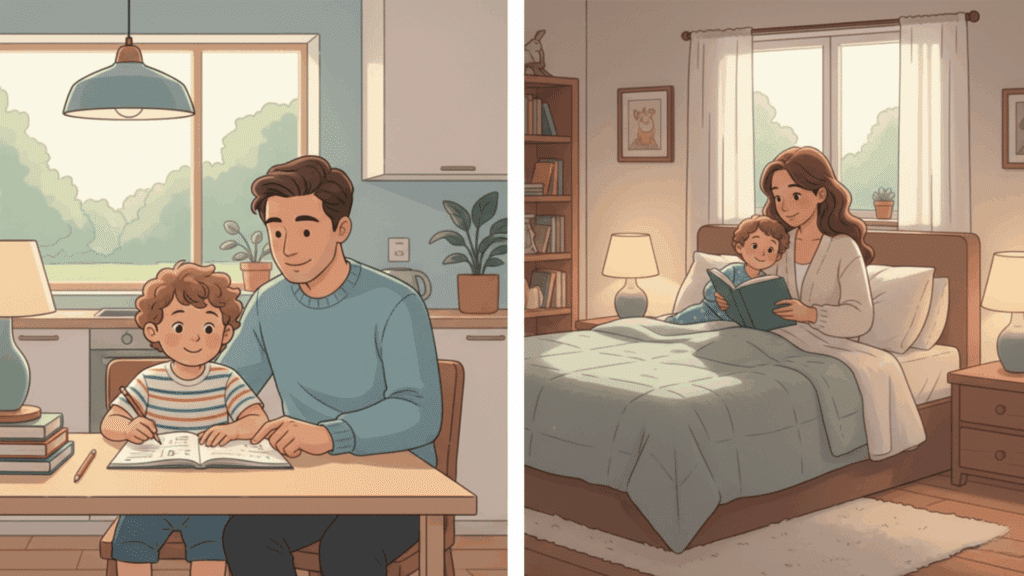Many students struggle with reading new words because they haven’t learned the six basic syllable patterns that govern English pronunciation.
This blog will teach you the six syllable types that teach pronunciation secrets in thousands of English words. You’ll learn to recognize each pattern and apply consistent rules that work across different vocabulary levels.
Each type has specific characteristics that predict vowel sounds and help with both reading and spelling.
Teachers and parents will gain systematic approaches to help students decode words confidently by using these proven syllable patterns, which form the foundation of English phonics instruction.
Importance of Syllable Types in Reading and Spelling
It provides students with reliable patterns that remove guesswork when reading unfamiliar words.
Instead of memorizing thousands of individual words, students learn six reliable patterns that apply across the entire English language.
Spelling improves dramatically when students recognize syllable patterns because they can choose appropriate vowel combinations confidently. Students learn when to use single vowels versus vowel teams by recognizing different types of syllables.
Most importantly, it builds reading confidence by giving students systematic tools for tackling new vocabulary. This knowledge applies to all subject areas where complex terminology is frequently encountered.
6 Syllable Types And Their Characteristics
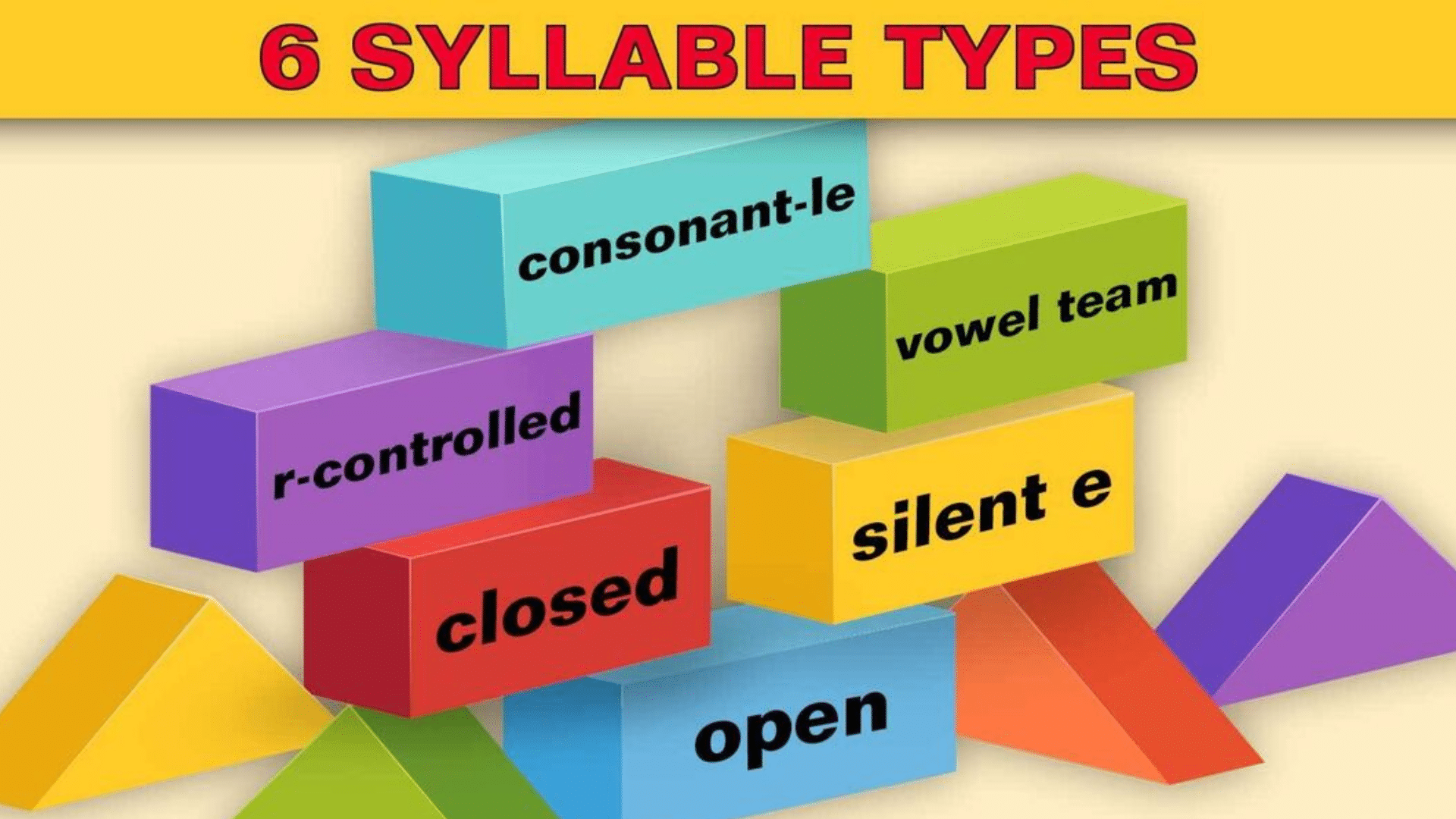
English syllables follow six distinct patterns that determine how vowels sound within words. Each syllable type has specific rules about vowel pronunciation, making word reading and spelling more predictable.
These six types appear consistently throughout the English language and provide the foundation for systematic phonics instruction.
1. Closed Syllables
Closed syllables end with consonants that trap the vowel inside, forcing it to make a short sound. This is the most common syllable type in English and appears frequently in basic vocabulary words.
Examples: cat, dog, rabbit, napkin, fantastic
Characteristics:
- One or more consonants follow a vowel
- Vowel makes a short sound (a, e, i, o, u)
- Often appears in one-syllable words and the first syllables of longer words
- Most predictable syllable type for beginning readers
- Forms the foundation for early phonics instruction
2. Open Syllables
Open syllables end with a vowel that produces its long sound because no consonant closes it in. These syllables give vowels the freedom to say their letter names clearly and distinctly.
Examples: me, go, baby, music, frozen
Characteristics:
- Ends with a vowel sound
- Vowel makes a long sound (says its name)
- Common at the end of words or as first syllables
- Often found in two-syllable words
- Helps students understand long vowel patterns
3. Vowel-Consonant-E (Silent E)
This syllable contains a vowel, a consonant, and a silent E that makes the first vowel long. The silent E acts like a magic helper, changing vowel sounds from short to long.
Examples: make, bike, complete, compete, athlete
Characteristics:
- Contains vowel + consonant + silent E pattern
- The first vowel makes a long sound
- Silent E is not pronounced
- Common in one-syllable and final syllables
- Easy pattern for students to recognize visually
4. Vowel Teams
Vowel teams occur when two vowels work together to create one sound. These combinations follow various rules, creating both predictable and unique vowel sounds throughout the language.
Examples: rain, boat, teacher, coin, because
Characteristics:
- Two vowels appear together
- Often follows the “first vowel talks” rule
- Can make long vowel sounds or special sounds
- Includes common patterns like ai, ea, oa, oi
- Requires memorization of specific team sounds
5. R-Controlled Syllables
R-controlled syllables contain vowels followed by R, which completely changes the vowel sound. The R takes control and creates unique sounds that don’t follow typical vowel rules.
Examples: car, her, bird, for, turtle
Characteristics:
- The letter R follows a vowel
- R “controls” or changes the vowel sound
- Creates sounds like ar, er, ir, or, ur
- Doesn’t follow long or short vowel patterns
- Sometimes called “bossy R” syllables
6. Consonant-LE Syllables
Consonant-LE syllables appear at word endings with a consonant plus L and a silent E. This pattern creates a separate syllable that helps students divide longer words correctly and systematically.
Examples: table, simple, candle, purple, little
Characteristics:
- Found at the end of multi-syllable words
- Contains a consonant + L + silent E
- Makes a schwa sound with the consonant
- Forms a separate syllable
- Helps with syllable division in longer words.
Activities to Strengthen Learning of Syllable Types
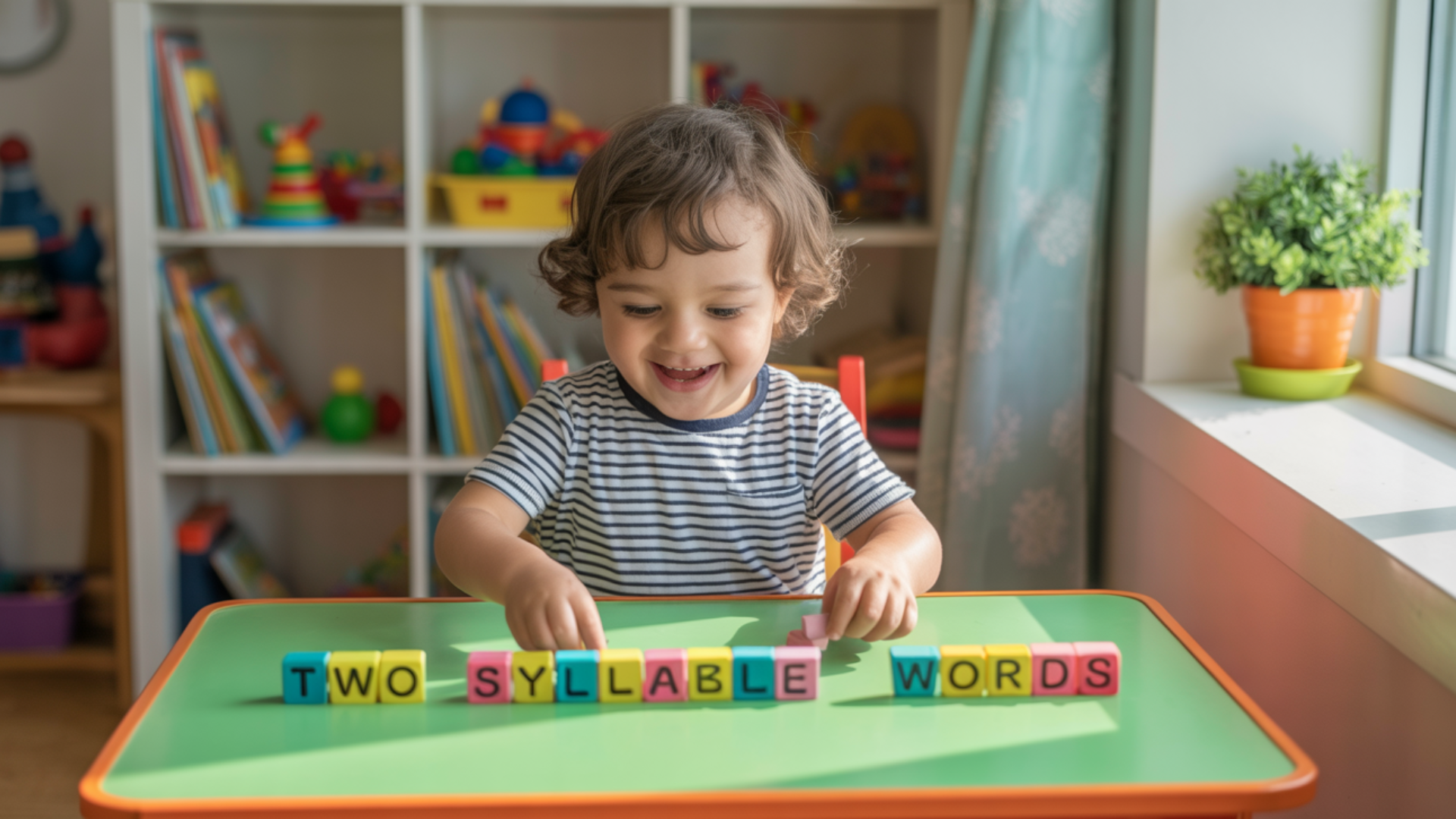
Hands-on activities help students practice identifying and applying syllable patterns in engaging ways that support classroom instruction.
These interactive exercises change abstract phonics concepts into concrete learning experiences that build confidence and fluency.
1. Syllable Type Sentence Challenge
Students use one word from each syllable type to create a complete sentence. This activity strengthens their understanding of word structure in context while promoting creativity.
It also supports grammar, vocabulary, and reading fluency through active application in writing.
- What You’ll Need: Word list cards, writing paper, pencils
- Skills Supported: Sentence construction, syllable identification, creative thinking
- Best For: Grades 2–5, literacy centers, writing warm-ups
2. Syllable Snap Card Game
Players flip cards containing words and call out the syllable type when matches occur. Similar to classic “Snap,” it builds quick recognition and recall.
It’s a fast-paced and fun way to practice distinguishing it under pressure, whether playing competitively or cooperatively.
- What You’ll Need: Card decks with words and syllable types
- Skills Supported: Speed recognition, classification, auditory processing
- Best For: Small groups, game stations, review sessions
3. Syllable Type Memory Match
Students match pairs of cards; one with a word, the other with its correct syllable type. It’s a quiet, independent, or partner game that fosters memory and word analysis. Use for early finishers or as a calm-down activity with a learning twist.
- What You’ll Need: Printed word cards and syllable type labels
- Skills Supported: Memory retention, decoding, and type identification
- Best For: One-on-one tutoring, small groups, learning centers
4. Build-a-Word Puzzle Boards
Create puzzle pieces where students must combine onsets, rhymes, and endings to form real words. Each puzzle set is grouped by syllable type.
Kids learn to blend sounds and recognize patterns as they manipulate word parts to fit together.
- What You’ll Need: Word puzzles, glue sticks, boards
- Skills Supported: Phonics blending, visual discrimination, word recognition
- Best For: Hands-on learners, K–2, intervention groups
5. Sticky Note Syllable Wall
Designate wall space for each syllable type and let students write words on sticky notes, then stick them under the corresponding category.
Great for movement-based learning, it also allows for collaborative building of a word wall across the week.
- What You’ll Need: Sticky notes, markers, labeled wall space
- Skills Supported: Sorting, visual categorization, teamwork
- Best For: Whole-class activities, anchor chart walls, exit tickets
6. Roll & Read Syllable Dice
Students roll a customized die labeled with syllable types. Then, they choose a matching word from a stack and read it aloud. This game encourages speaking confidence and type recall while adding a tactile component to learning.
- What You’ll Need: Syllable dice, word stack, reading chart
- Skills Supported: Oral fluency, type matching, motor engagement
- Best For: Solo practice, partner games, fluency warm-ups
7. Syllable Flip and Sort Cards
Flip cards have a word on one side and a blank back. Students flip, read, and then place the card under the correct category on a labeled mat. It’s an ideal assessment tool or independent practice for reinforcing recognition.
- What You’ll Need: Flip cards, sorting mat, folders
- Skills Supported: Categorization, independent decoding, focus
- Best For: Literacy centers, RTI groups, homework kits
8. Magnetic Board Word Sort
Use magnetic letters or printed words with a magnetic board. Students read each word, determine the syllable type, and place it under the right heading. Perfect for small group instruction or multisensory review.
- What You’ll Need: Magnetic letters/words, whiteboard, labels
- Skills Supported: Visual-motor skills, phonics, pattern recognition
- Best For: Kinesthetic learners, pull-out sessions, phonics labs
9. Syllable Type Scavenger Hunt
Hide word cards around the room. Students must find and sort them by syllable type into folders or baskets. Great for kinesthetic learners, this engaging game combines literacy with movement for maximum impact.
- What You’ll Need: Word cards, labeled baskets, scavenger checklist
- Skills Supported: Word identification, physical activity, classification
- Best For: Classroom energizers, indoor recess, small group play
10. Online CLOVER Quiz Challenge
Use digital quiz tools (like Kahoot or Google Forms) to test knowledge of syllable types.
Questions can include identifying types, sorting examples, or filling in blanks. This is perfect for tech integration and progress tracking.
- What You’ll Need: Device access, quiz platform, word list
- Skills Supported: Digital literacy, syllable type mastery, test readiness
- Best For: Remote learning, tech centers, end-of-unit review
11. Pocket Chart Syllable Sort
Students pick word cards and place them into the correct category pocket on a chart. The chart remains visible as a reference. It’s reusable, visual, and adaptable across skill levels or whole-group lessons.
- What You’ll Need: Pocket chart, word cards, labels
- Skills Supported: Visual learning, vocabulary review, pattern spotting
- Best for: Daily warm-ups, center rotations, and shared reading blocks.
The Bottom Line
Mastering the six syllable types gives students powerful decoding tools that work across thousands of English words.
These patterns provide structure and predictability to what often seems like a chaotic system of spelling and pronunciation rules.
Start teaching it systematically, using memory aids and visual tools to support learning. Practice with real words from students’ reading materials to make connections meaningful and practical.
These foundational skills create independent readers who approach new words with strategy rather than guesswork.





